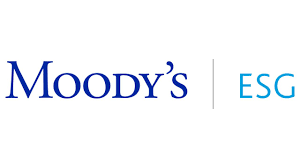Personal Injury Payment Rate Change: Boost for Insurance Companies
1. Introduction
In February, the UK experienced an unexpected cut to the personal injury payment rate, also known as the Ogden discount rate. This rate is used to calculate upfront personal injury payments and has a significant impact on insurance premiums. The rate cut resulted in a rise in premiums and a dent in motor insurers’ profits. However, the government has recently announced plans to alter the rate, which will reduce payments and potentially lower insurance premiums. In this article, we will explore the background of the personal injury payment rate, the impact of the rate cut, the government’s consultation on the rate calculation, the proposed changes, and the potential effects on insurance premiums.
2. Background of Personal Injury Payment Rate
The personal injury payment rate, or Ogden discount rate, is a crucial factor in calculating upfront personal injury payments. It determines the lump sum a claimant receives to cover their future financial losses, such as loss of earnings and medical expenses. The rate is also used to assess the size of lump sum payments in personal injury and clinical negligence cases.
Previously, the discount rate stood at 2.5%, assuming that claimants would invest their compensation in low-risk investments to generate a return. However, in February, the rate was unexpectedly reduced to -0.75%. This meant that claimants would receive larger lump sum payments to compensate for lower expected investment returns.
3. Impact of the Rate Cut
The rate cut had a significant impact on insurance premiums. Motor insurers, in particular, faced profit losses as they had to make larger lump sum payments for personal injury claims. As a result, insurance premiums rose across the board. This sudden change led to an outcry from insurers, prompting the government to undertake a consultation on how the rate is calculated.
4. Government Consultation on the Rate Calculation
In response to the concerns raised by insurers, the UK government launched a consultation to review the methodology for calculating the personal injury payment rate. The consultation aimed to gather evidence and opinions from various stakeholders, including insurers, claimant representatives, and financial experts. The goal was to establish a fair and consistent approach to calculating the rate that reflects claimants’ investment behavior.
5. Proposed Changes to the Rate
Based on the evidence collected during the consultation, the Ministry of Justice has proposed changes to the personal injury payment rate. The government plans to set a new rate that falls within the range of 0 to 1 percent, assuming a single rate is set today using the new approach. These changes will result in reduced upfront personal injury payments and potentially lower insurance premiums. It is important to note that the new rate will not be applied retrospectively.
6. Potential Effects on Insurance Premiums
The proposed changes to the personal injury payment rate are expected to have a positive impact on insurance premiums. A lower rate will require insurers to make smaller lump sum payments for personal injury claims, assuming lower annual investment returns for those payments. This will help relieve some of the cost pressures on motor and liability insurance, ultimately benefiting customers.
7. Reaction from the Insurance Industry
The proposed changes to the personal injury payment rate have been met with mixed reactions from the insurance industry. While insurers welcome the potential reduction in upfront payments and insurance premiums, they also highlight the need for clarity on how the new rate will be set and adjusted. Insurers stress the importance of a fair and consistent approach to ensure the sustainability of the insurance market.
8. Draft Legislation and Parliamentary Process
To implement the proposed changes, draft legislation will be presented to Parliament. The legislation will outline the new methodology for calculating the personal injury payment rate. The parliamentary process will involve debates and discussions to ensure the legislation is robust and addresses the concerns raised during the consultation. Once approved, the new rate will come into effect, providing stability and predictability for insurers and claimants alike.
9. The Importance of the Discount Rate
The personal injury payment rate plays a crucial role in providing fair compensation to claimants and maintaining the stability of the insurance market. It ensures that claimants receive adequate financial support to meet their future needs, taking into account the impact of inflation and investment returns. By adjusting the rate, the government aims to strike a balance between the interests of claimants and insurers, promoting a sustainable and competitive insurance industry.
10. Conclusion
The proposed changes to the personal injury payment rate offer a glimmer of hope for insurance companies and policyholders alike. By setting a new rate within the range of 0 to 1 percent, the government aims to reduce upfront personal injury payments and lower insurance premiums. This move is expected to alleviate some of the cost pressures on motor and liability insurance, benefiting customers in the long run. As the draft legislation moves through the parliamentary process, insurers and claimants await the final outcome, hoping for a fair and consistent approach to calculating the personal injury payment rate.




